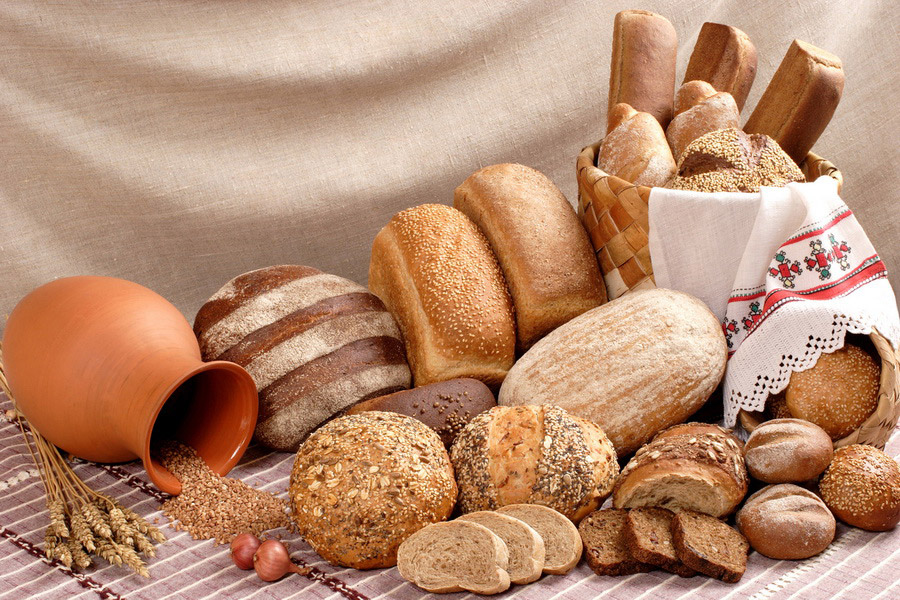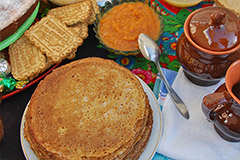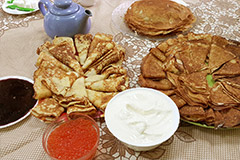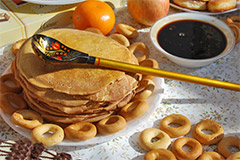
For as long as anyone can remember, Russians have grown rye, wheat, barley, oats and millet. Russians also had the technology to make flour earlier than many other places in Europe and Asia, which is why there is such a variety of baked goods in Russian cuisine.
Many of these dishes are famous around the world, and some are uniquely loved in Russia. Some dishes involved dough but not baking, like pelmeni, and though these dishes are also popular, Russian baked goods had a special place on any table.
Blini
Blini are some of the oldest Russian foods, and have been around since at least the 9th century. Blini are thin, like French crepes, and are light, fluffy and flexible. They can be folded and topped with sour cream, caviar, condensed milk, honey, or berries, or they can be wrapped around more savory fillings like meat, cabbage, or eggs.
Gingerbread
The most traditional Russian baked good is gingerbread, either as cookies or cakes. The first gingerbreads appeared in Russia in the 9th century, as a simple mix of rye flour with honey and berry juice. Later, in the 11th and 12th centuries, gingerbreads became more complex, with more spices, like cinnamon, cloves, cardamom, lemon zest, nutmeg, mint, anise, ginger, and vanilla. There are many types of gingerbread, each based on its main ingredient. There are honey, rye, wheat, almond, lemon, mint, raspberry, treacle, and other types of gingerbread. Most types (except mint and gingerbreads from Vyazma) are covered with a glaze, which is sometimes multicolored or pink, but most often white.
Kulich are a special type of gingerbread that are only baked for Easter. The dough is made from cream, butter, sugar, eggs, and yeast, which makes the finished cake extra tasty and soft. A classic kulich will contain extra ingredients, like raisins, candied fruits, candied lemon peel, or oranges, with saffron as a garnish. The shape is what really makes a kulich extra special. The cake is baked in cylindrical forms that give it a taller shape. Kulich are drizzled with white icing, decorated with flowers or sprinkles, and then brought to the church to be blessed on Easter.
Pierogies
Pierogies are a true Russian baked good, which have made it from ancient times to the present day with few influences from other countries. Originally, pierogies were only baked for holidays. Even the word pierogi comes from the ancient Russian word “pir”, which is a holiday feast.
The dough for pierogies had to be sour with yeast, or “live”, as it was also called. The filling was often one product, such as a vegetable (cabbage, peas, carrots, radishes, potatoes, onion, sorrel), mushrooms (dried, boiled, fried, pickled), grains with butter (usually rice), fish, meat, poultry (usually chicken), cheese, eggs, or game. Sometimes there were popular combinations, such as onion and egg, cabbage and egg, onions and mushrooms, or meat or fish with rice and eggs. A pierogi with two or more fillings was called a coulibiac, which became especially popular in the beginning of the 1900s.




